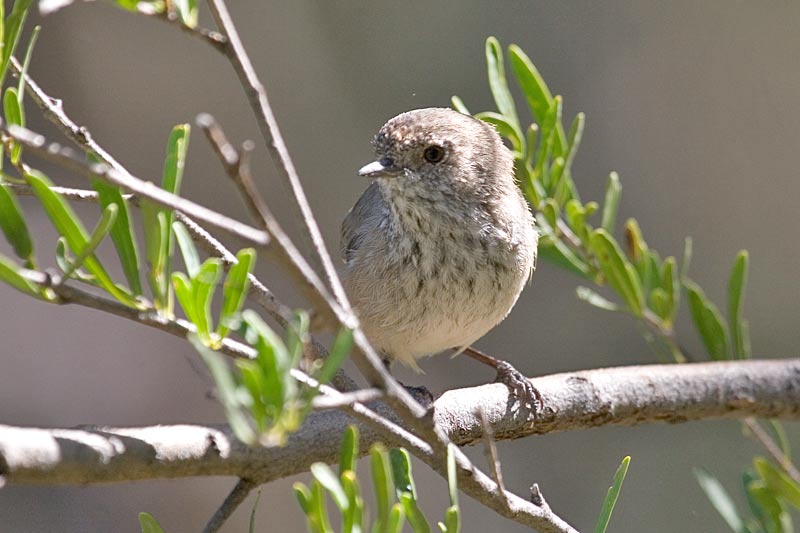Inland Thornbill

| Inland Thornbill | |
|---|---|
| Conservation status | |
| Scientific classification | |
| Kingdom: | Animalia |
| Phylum: | Chordata |
| Class: | Aves |
| Order: | Passeriformes |
| Family: | Pardalotidae |
| Genus: | Acanthiza |
| Species: | A. apicalis |
| Binomial name | |
| Acanthiza apicalis Gould, 1847 | |
| Subspecies | |
Acanthiza apicalis apicalis
Acanthiza apicalis albiventris Acanthiza apicalis cinerascens Acanthiza apicalis whitlocki | |
The Inland Thornbill (Acanthiza apicalis), commonly called the Broad-tailed Thornbill, is a small, insect-eating bird of Australia. The Inland Thornbill is commonly confused with the coastalBrown Thornbill (Acanthiza pusilla) due to its similar colorations. The Inland Thornbill encompasses four subspecies :
- A. a. apicalis
- A. a. albiventris
- A. a. cinerascens
- A. a. whitlocki
The thornbill ranges in size from 9 to 11 centimeters, averaging 10 centimeters and 7 grams.The bird has a grey-brown back, a reddish rump, and a dark tail with a white tip. Its underbelly is cream colored with black streaks. Both male and female thornbills look similar, though male birds tend to be a bit larger.
Breeding season lasts from July through December. Female thornbills average three eggs per clutch, which incubate for 19 days. Baby birds leave the nest after 17 days.
The thornbill can be found throughout Australia inland of the Great Dividing Range, but not in tropical northern climates or in Tasmania.The Inland Thornbill overlaps in range with the Brown Thornbill along the Great Diving Range, leading to numerous mis-sightings. Inland thornbills live in dry scrublands and woodlands. In Southwestern Australia, they also inhabit sand heaths and karri and jarrah forests. It feeds on small insects and spiders, and occasionally seeds and small vegetable matter, beneath shrubs and in foliage.

No comments:
Post a Comment